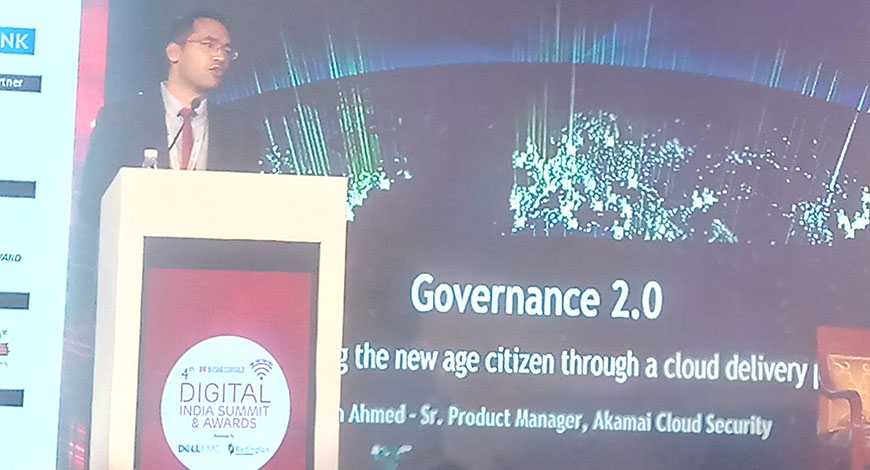- Economy
- Education And Career
- Companies & Markets
- Gadgets & Technology
- After Hours
- Healthcare
- Banking & Finance
- Entrepreneurship
- Energy & Infra
- Case Study
- Video
- More
- Sustainability
- Web Exclusive
- Opinion
- Luxury
- Legal
- Property Review
- Cloud
- Blockchain
- Workplace
- Collaboration
- Developer
- Digital India
- Infrastructure
- Work Life Balance
- Test category by sumit
- Sports
- National
- World
- Entertainment
- Lifestyle
- Science
- Health
- Tech
Digital India Mission Is Orchestrated Towards Empowering People Through Technology: Neeta Verma, DG, NIC
At the 4th Digital India Summit and Awards organised by BW Businessworld, stalwarts from the digital sector gathered and discussed various aspects of Digital India
Photo Credit :

At the 4th Digital India Summit and Awards organised by BW Businessworld, stalwarts from the digital sector gathered and discussed various aspects of Digital India
In her keynote address, Neeta Verma, Director General, National Information Centre said, "Digital India mission is orchestrated towards empowering people through the power of technology. By empowerment, we mean access to information, online services, education, employment opportunities, healthcare, marketplaces, entertainment and travel & transport. There are a large number of people outside this room in our country who do not have access. It is about digital inclusion, where every person irrespective of demography or any other factor is included. In the digital India program it's about digital infrastructure as a utility to every citizen, governance and services on demand, and digital empowerment of citizens. We need to educate them and enable them by giving them access to smartphones at an affordable cost across India". She also added, "The digital India program despite being launched by the government, does not mean that the onus is on the government. It involves digital infrastructure, digital platforms and digital enablement. There was a huge industry representation at the launch of digital India and different segments have to come forward to make this happen".
She also added, "There is NICNET, a nation-wide government network, through which all offices of the government are connected. The government has data centres, and there is a secure access to these networks available. We have seamlessly connected all networks. It is a secure and cost-effective network. The National Knowledge Network has state of the art multi gigabit pan India network empowering digital India. It is the largest network of its kind globally as it carries education, e-governance and internet traffic. NKN's high-speed network is the primary backbone for the entire government network (NICNET). There are also video-conferencing services which happen through this network which has changed the way the government interacts. Data centres are available across the country".
"There is a national cloud which works across these data centres. A Soil Health Card has been developed to establish the national database on soil health and provide fertilizer and micro-nutrient suggestions for the soil to farmers. There is a national scholarship portal for students which is a one-stop solution, and there is e-counselling which simplifies the admission process. There is an e-hospital service, through which hospitals can go online and there are around 300 hospitals on board now. Various government missions are also now digital, like NGNREGA or Swachh Bharat Mission, or Pradhan Mantri Awas Yojana- Gramin. There is also a Public Financial Management System which is a central sector plan scheme, and e-courts, which run in the judicial system. Cyber Security is at the core of Digital India, and there is a multi-layered security and application security is as well. We also have a NIC-CERT system. Digital inclusion is the key to digital India", added Verma.
During the event, there was a presentation on "Governance 2.0: Empowering new age citizen through cloud delivery services" by Aseem Ahmed, Senior Product Manager, Cloud Security, Asia-Pacific, Akamai Technologies.
"India's story of Internet shift is phenomenal. We are talking about 500 million users connected to the internet. An average user of 4G was consuming 11 GB per month at the end of 2017. As hyper-connectivity becomes the backbone of digital nation initiatives, citizens expect every online. Today's citizens demand lightning fast responses and digital user interfaces. Online services from the government should become more than an IT thought, it should become an integral part of how government acquire and empower citizens. Citizen 2.0 is impatient, and time is perceived as a luxury that many don't have. Citizens need a secure fast and easy access to applications ", said Ahmed. He also added, "We need to get to know Citizen 2.0. They believe that new technologies offer more opportunities than risk. They prefer to complete tasks digitally whenever possible. The digital world is transforming faster than ever, creating an ecosystem of everything as a service. This calls for a complete rethink of how one engages with the citizens. Today's citizens are basically customers, and hence there has to be user-centricity, a customer based approach. There has to be cyber-security, and zero trust adoption.
Everything as a service brings the more predictive cost to the government. There has to be increasing cloud technology adoption, with agility, availability and costs taken into consideration. Data analytics is also a key area in the new governance model". "Using cloud infrastructure government can define cloud infrastructure applications for their services. But what takes the user experience to the next level are cloud platforms. We are the world's largest and most trusted cloud delivery platform. It makes it easier for governments to provide the best and most secure digital web experience on any device anytime, anywhere. Overall we reduce the cost for the government. The new age citizen is already here", said Ahmed.
